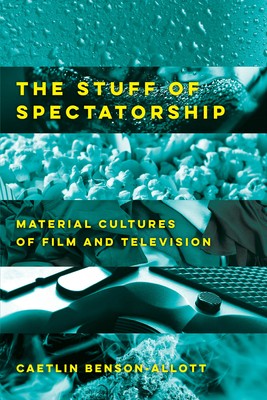
- We will send in 10–14 business days.
- Author: Caetlin Benson-Allott
- Publisher: University of California Press
- ISBN-10: 0520300408
- ISBN-13: 9780520300408
- Format: 15.8 x 23.1 x 2.5 cm, hardcover
- Language: English
- SAVE -10% with code: EXTRA
Reviews
Description
Film and television create worlds, but they are also of a world, a world that is made up of stuff, to which humans attach meaning. Think of the last time you watched a movie: the chair you sat in, the snacks you ate, the people around you, maybe the beer or joint you consumed to help you unwind--all this stuff shaped your experience of media and its influence on you. The material culture around film and television changes how we make sense of their content, not to mention the very concepts of the mediums. Focusing on material cultures of film and television reception, The Stuff of Spectatorship argues that the things we share space with and consume as we consume television and film influence the meaning we gather from them. This book examines the roles that six different material cultures have played in film and television culture since the 1970s--including video marketing, branded merchandise, drugs and alcohol, and even gun violence--and shows how objects considered peripheral to film and television culture are in fact central to its past and future.
EXTRA 10 % discount with code: EXTRA
The promotion ends in 17d.14:06:13
The discount code is valid when purchasing from 10 €. Discounts do not stack.
- Author: Caetlin Benson-Allott
- Publisher: University of California Press
- ISBN-10: 0520300408
- ISBN-13: 9780520300408
- Format: 15.8 x 23.1 x 2.5 cm, hardcover
- Language: English English
Film and television create worlds, but they are also of a world, a world that is made up of stuff, to which humans attach meaning. Think of the last time you watched a movie: the chair you sat in, the snacks you ate, the people around you, maybe the beer or joint you consumed to help you unwind--all this stuff shaped your experience of media and its influence on you. The material culture around film and television changes how we make sense of their content, not to mention the very concepts of the mediums. Focusing on material cultures of film and television reception, The Stuff of Spectatorship argues that the things we share space with and consume as we consume television and film influence the meaning we gather from them. This book examines the roles that six different material cultures have played in film and television culture since the 1970s--including video marketing, branded merchandise, drugs and alcohol, and even gun violence--and shows how objects considered peripheral to film and television culture are in fact central to its past and future.


Reviews